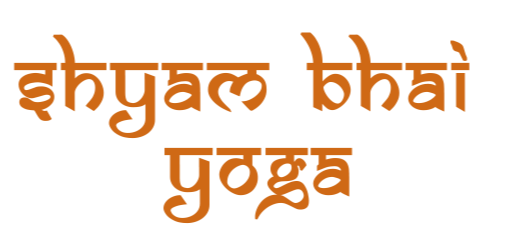 Fatigue represents one of the most common yet under addressed symptoms affecting people with diabetes. This profound exhaustion extends beyond normal tiredness, impacting quality of life, diabetes self-management, and overall health outcomes. While medication, diet, and conventional exercise form the cornerstone of diabetes management, yoga offers a complementary approach specifically valuable for addressing the multifaceted nature of diabetes-related fatigue through its integrated effects on metabolism, circulation, stress response, and energy regulation.
Fatigue represents one of the most common yet under addressed symptoms affecting people with diabetes. This profound exhaustion extends beyond normal tiredness, impacting quality of life, diabetes self-management, and overall health outcomes. While medication, diet, and conventional exercise form the cornerstone of diabetes management, yoga offers a complementary approach specifically valuable for addressing the multifaceted nature of diabetes-related fatigue through its integrated effects on metabolism, circulation, stress response, and energy regulation.

Understanding Diabetes-Related Fatigue
Before exploring yoga’s benefits, understanding the complex nature of diabetes fatigue provides essential context:
Physiological Mechanisms of Diabetes Fatigue
Multiple interrelated factors contribute to energy depletion:
- Blood Glucose Fluctuations: Both hyperglycemia and hypoglycemia create fatigue through different mechanisms
- Inflammatory Processes: Chronic low-grade inflammation associated with diabetes increases cytokines that trigger fatigue
- Insulin Resistance: Compromised cellular energy production from impaired glucose uptake
- Microvascular Complications: Reduced oxygen and nutrient delivery to tissues through small vessel damage
- Autonomic Dysfunction: Dysregulation of systems controlling energy allocation and rest-activity cycles
- Sleep Disruption: Higher rates of sleep apnea, neuropathy pain, and nocturia interrupting restorative sleep
- Medication Effects: Many diabetes medications may contribute to fatigue as a side effect
Psychological Dimensions of Energy Depletion
Mental and emotional factors equally impact energy levels:
- Diabetes Distress: The emotional burden of managing a complex chronic condition
- Cognitive Load: The constant decision-making and vigilance required for diabetes management
- Depression Comorbidity: Higher rates of depression that both causes and results from fatigue
- Anxiety Effects: Stress hormone dysregulation that depletes energy reserves
- Motivation Challenges: Difficulty sustaining self-care behaviors when experiencing chronic fatigue
Understanding this complex interplay explains why effective fatigue management requires a multidimensional approach addressing physiological, psychological, and behavioral factors simultaneously.
How Yoga Addresses Diabetes-Related Fatigue
Yoga offers a comprehensive approach to energy enhancement through several complementary pathways:
1. Glucose Regulation Improvement
Several aspects of yoga practice directly influence blood glucose stability:
- Muscular Glucose Uptake: Active poses stimulate glucose transport into muscle cells independent of insulin
- Hepatic Glucose Production: Relaxation practices may reduce excessive liver glucose output during stress
- Insulin Sensitivity Enhancement: Regular practice improves cellular response to insulin
- Pancreatic Function Support: Certain poses and breathing practices may enhance beta cell function
- Glycemic Variability Reduction: Combined practices help stabilize blood glucose patterns
Research published in the Journal of Clinical and Diagnostic Research demonstrated significant reductions in HbA1c and fasting blood glucose following regular yoga practice, suggesting improved overall glycemic regulation that directly impacts energy levels.
2. Stress Response Modulation
Yoga’s effects on the stress response system directly influence fatigue patterns:
- HPA Axis Regulation: Normalizes cortisol patterns that affect energy distribution
- Parasympathetic Activation: Triggers “rest and digest” functions supporting energy restoration
- Stress Hormone Reduction: Lowers adrenaline and cortisol that can cause energy crashes
- Autonomic Balance Restoration: Improves coordination between sympathetic and parasympathetic systems
- Allostatic Load Reduction: Decreases the physiological cost of chronic stress that contributes to fatigue
Studies using heart rate variability measures show improved autonomic function following consistent yoga practice, supporting its effectiveness for managing the stress-fatigue connection.
3. Inflammatory Response Improvement
Yoga’s anti-inflammatory effects address a key fatigue contributor:
- Pro-inflammatory Cytokine Reduction: Regular practice reduces inflammation markers like IL-6 and TNF-alpha
- Vagal Tone Enhancement: Improves the anti-inflammatory effects of vagus nerve activity
- Oxidative Stress Reduction: Decreases free radical damage implicated in diabetes complications
- Immune Regulation: Helps normalize immune function that can drive fatigue when dysregulated
- Systemic Inflammation Markers: Research shows decreased CRP levels following consistent practice
These anti-inflammatory effects provide another pathway through which yoga directly addresses underlying fatigue mechanisms.
4. Sleep Quality Enhancement
Yoga offers specific benefits for sleep disruption common in diabetes:
- Sleep Onset Improvement: Relaxation techniques reduce time to fall asleep
- Sleep Architecture Support: May increase time in deep sleep stages most crucial for energy restoration
- Sleep Continuity Enhancement: Reduces nighttime awakenings common in diabetes
- Circadian Rhythm Regulation: Morning practice helps establish consistent sleep-wake patterns
- Pain Reduction: Decreases neuropathy and muscular discomfort that may interrupt sleep
Research in the Journal of Clinical Sleep Medicine demonstrated improved sleep quality measures in diabetes patients following a regular yoga program, directly supporting energy recovery.

5. Respiratory Efficiency Improvement
Enhanced breathing function supports energy production:
- Oxygen Delivery Enhancement: Improved breathing mechanics increase oxygen available to tissues
- Respiratory Muscle Strengthening: Builds efficiency in diaphragm and accessory breathing muscles
- Carbon Dioxide Balance: Optimizes respiratory patterns affecting energy production
- Lung Capacity Utilization: Increases functional breathing capacity often reduced in metabolic syndrome
- Ventilation-Perfusion Matching: Improves coordination between breathing and circulation systems
These respiratory benefits directly support cellular energy production that may be compromised in diabetes.
Most Effective Yoga Approaches for Diabetes-Related Fatigue
Specific elements of yoga practice particularly address fatigue concerns:
1. Energy-Balancing Pose Sequences
Certain pose combinations specifically support energy regulation:
a) Supported Backbend Series
These gentle heart-openers counteract energy-depleting postural patterns:
- Supported Fish Pose (Matsyasana with props)
- Supported Bridge Pose (Setu Bandhasana with block)
- Reclined Bound Angle (Supta Baddha Konasana with bolster)
- Gentle Camel Pose (Ustrasana with hands on lower back)
Benefits: Opens chest for improved breathing capacity, counteracts depression-related postural collapse, stimulates adrenal regulation, and creates gentle axial extension without energy expenditure.
b) Standing Pose Sequence for Activation
These poses create balanced energy engagement without depletion:
- Mountain Pose (Tadasana) with active alignment
- Triangle Pose (Trikonasana) with support as needed
- Warrior II (Virabhadrasana II) with moderate holding
- Wide-Legged Forward Fold (Prasarita Padottanasana) with head support
Benefits: Engages major muscle groups improving glucose uptake, creates balanced effort supporting energy regulation, stimulates circulation without exhaustion, and builds sustainable strength gradually.
For those seeking specialized approaches addressing the unique needs of diabetes management, Online Yoga Classes For Diabetes provide structured sequences specifically designed for blood glucose regulation, complication prevention, and energy enhancement with appropriate modifications based on individual health status.
Also Read 7 Yoga Tips to Manage Diabetes Effectively
c) Gentle Inversion Series
These modified inversions support energy without stress:
- Legs-Up-the-Wall Pose (Viparita Karani)
- Downward-Facing Dog (Adho Mukha Svanasana) with support options
- Seated Forward Bend (Paschimottanasana) with bolster support
- Half Shoulderstand (Ardha Sarvangasana) with chair support if appropriate
Benefits: Enhances venous return reducing cardiovascular workload, provides refreshing effects on nervous system, stimulates thyroid function influencing metabolism, and offers energizing effects without exhaustion.
2. Breath Practices for Energy Regulation
Specific pranayama techniques address different aspects of fatigue:
a) Three-Part Breath (Dirga Pranayama)
This fundamental technique improves respiratory efficiency:
- Seated or reclined in comfortable position
- Inhale sequentially into abdomen, mid-chest, and upper chest
- Exhale in reverse order, releasing upper chest, mid-chest, then abdomen
- Practice for 3-5 minutes, gradually extending breath without strain
- Can be practiced even during low-energy periods
Benefits: Improves oxygen delivery efficiency, enhances diaphragmatic function, provides gentle energizing effect, and serves as foundation for more advanced breathing practices.
b) Alternate Nostril Breathing (Nadi Shodhana)
This balancing technique helps regulate fluctuating energy patterns:
- Sit comfortably with spine supported
- Use right thumb to close right nostril, inhale through left
- Close left nostril with ring finger, exhale through right
- Inhale through right, close with thumb, exhale through left
- Continue alternating for 3-5 minutes
Benefits: Balances sympathetic and parasympathetic systems, improves focus reducing mental fatigue, creates a calming yet energizing effect, and helps manage blood glucose fluctuations.
c) Cooling Breath (Sheetali or Sitkari)
These techniques are particularly valuable during hyperglycemic fatigue:
- Sheetali: Curl tongue into tube shape, inhale through tongue
- Sitkari: Gently close teeth, part lips, inhale through teeth
- For both: Exhale normally through nose
- Practice for 3-5 minutes when feeling heat or energy depletion
- Can be practiced seated or reclined depending on energy level
Benefits: Creates cooling effect helpful during hyperglycemia, calms agitated nervous system, reduces inflammatory response, and provides refreshing energy enhancement.
3. Guided Relaxation for Energy Restoration
These practices support the parasympathetic recovery essential for managing fatigue:
a) Yoga Nidra for Deep Restoration
This systematic relaxation practice offers significant energy recovery:
- Lie comfortably with appropriate support
- Follow systematic body awareness instructions
- Maintain state between wakefulness and sleep
- Practice for 15-20 minutes when experiencing fatigue
- Can provide restoration equivalent to significantly longer sleep
Benefits: Reduces accumulated sleep debt, restores nervous system balance, decreases allostatic load contributing to fatigue, and enhances overall energy recovery efficiency.
b) Body Scanning for Tension Release
This mindfulness-based practice reduces energy drain from unconscious tension:
- Lie or sit in comfortable position with support as needed
- Systematically bring attention to each body area
- Notice and consciously release tension patterns
- Pay particular attention to jaw, shoulders, and abdominal regions
- Practice for 5-10 minutes several times daily
Benefits: Identifies and releases unconscious tension patterns depleting energy, improves body awareness supporting self-management, reduces pain contributing to fatigue, and enhances mind-body connection.
Creating an Effective Practice for Diabetes-Related Fatigue
For optimal results in managing diabetes-related fatigue:
1. Energy Pattern Responsiveness
Adapt practice to current energy states:
- During low energy periods: Focus on supported poses, gentle inversions, and restorative practices
- During relatively balanced energy: Include moderate standing poses and breath work
- During hyperglycemia-related fatigue: Emphasize cooling practices and gentle movement
- During hypoglycemia: Focus on restorative poses with appropriate blood glucose management
2. Time-of-Day Considerations
Align practice with natural energy rhythms:
- Morning practice: Include gentle activation to establish healthy cortisol patterns
- Afternoon practice: Focus on balancing techniques to prevent energy crashes
- Evening practice: Emphasize relaxation and sleep preparation elements
- Throughout day: Incorporate brief breath practices during energy fluctuations
3. Glucose Awareness Integration
Combine practice with appropriate monitoring:
- Check blood glucose before and after practice to identify patterns
- Notice energy response in relation to glucose levels
- Adjust practice intensity based on glucose patterns
- Use glucose awareness to develop individualized approach
- Maintain communication with healthcare providers about practice effects
Expert Guidance for Diabetes-Specific Yoga Practice
While general yoga offers benefits, specialized instruction ensures appropriate practice for diabetes management.For ongoing wellbeing supporting overall diabetes management, Online Yoga Classes offer diverse approaches addressing various aspects of health that influence energy levels and diabetes management capacity.
Beyond Individual Practice: Comprehensive Fatigue Management
Yoga works most effectively as part of an integrated approach to diabetes-related fatigue:
Complementary Lifestyle Factors
Support yoga’s benefits through aligned behaviors:
- Consistent meal timing supporting stable glucose levels
- Appropriate hydration enhancing energy transport mechanisms
- Regular, gentle physical activity between formal practice
- Mindful technology use reducing cognitive fatigue
- Strategic rest periods preventing energy depletion
Self-Compassion Integration
Address the psychological dimensions of fatigue management:
- Recognize fatigue as legitimate diabetes symptom, not personal failure
- Apply self-compassion techniques during energy fluctuations
- Develop realistic expectations about energy levels
- Create compassionate language countering diabetes-related frustration
- Integrate acceptance practices alongside active management approaches
By approaching diabetes-related fatigue through yoga’s comprehensive framework—addressing glycemic control, stress regulation, inflammation, sleep quality, and respiratory function—individuals can develop sustainable energy management strategies that enhance both diabetes self-care capacity and overall quality of life.
Inquiry
If you have any questions, please feel free to reach out. We’ll be glad to help!

